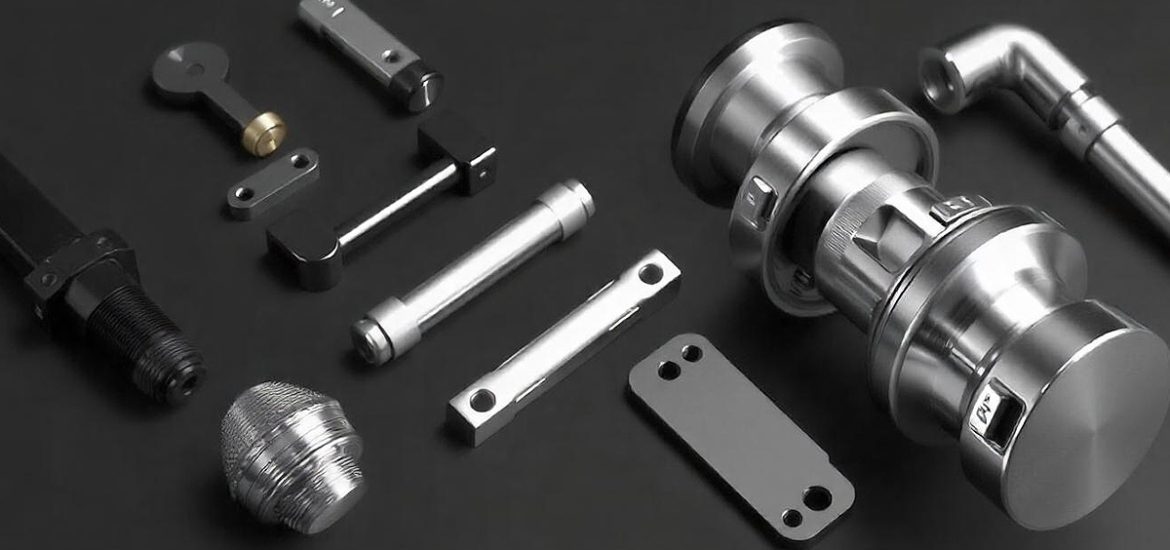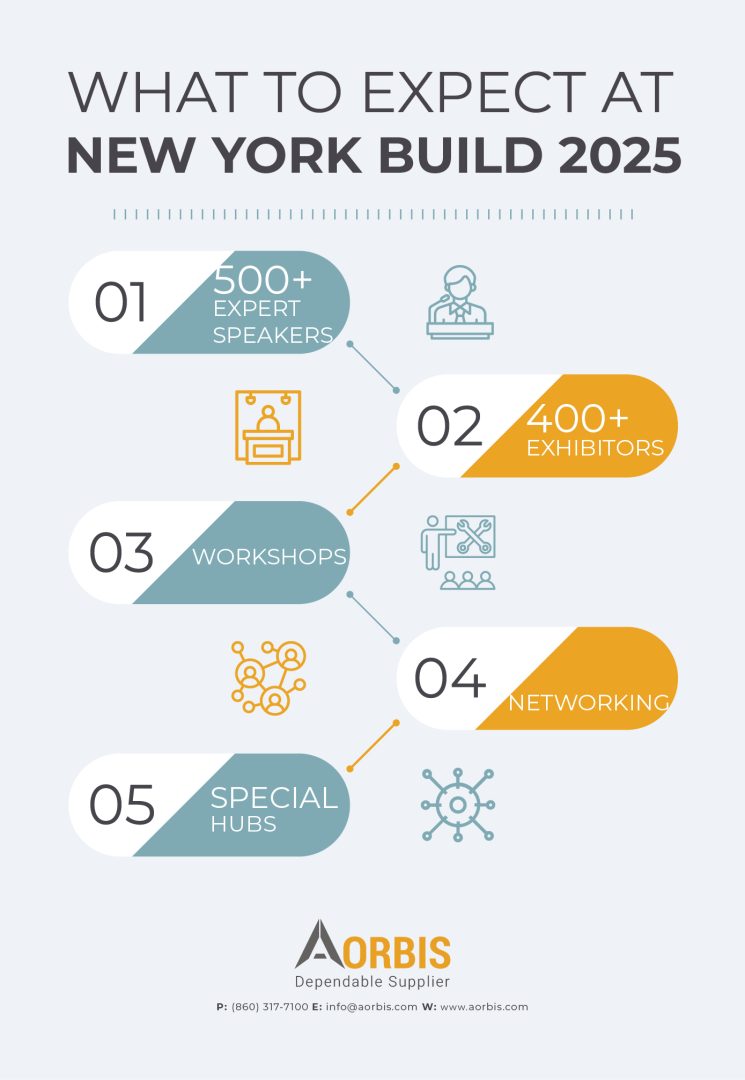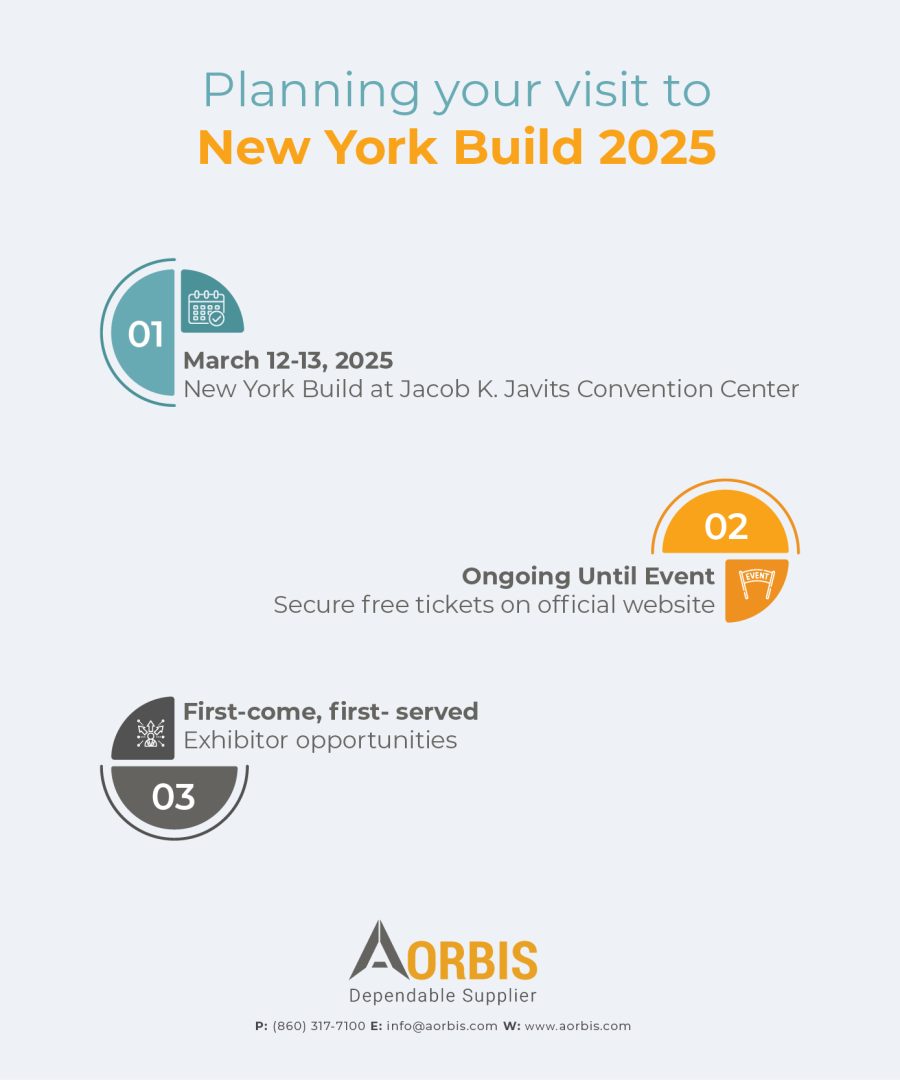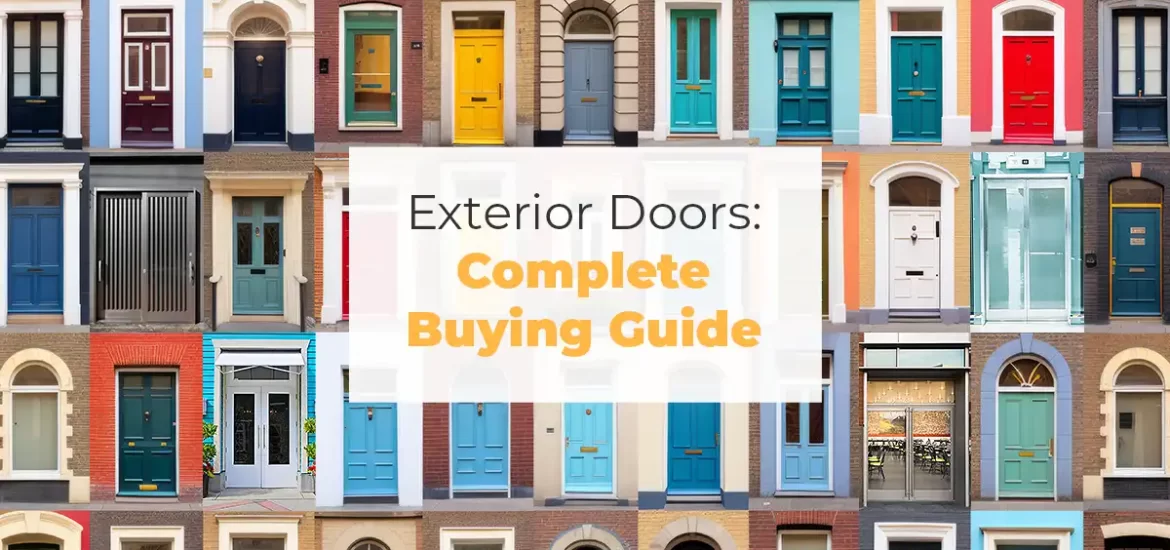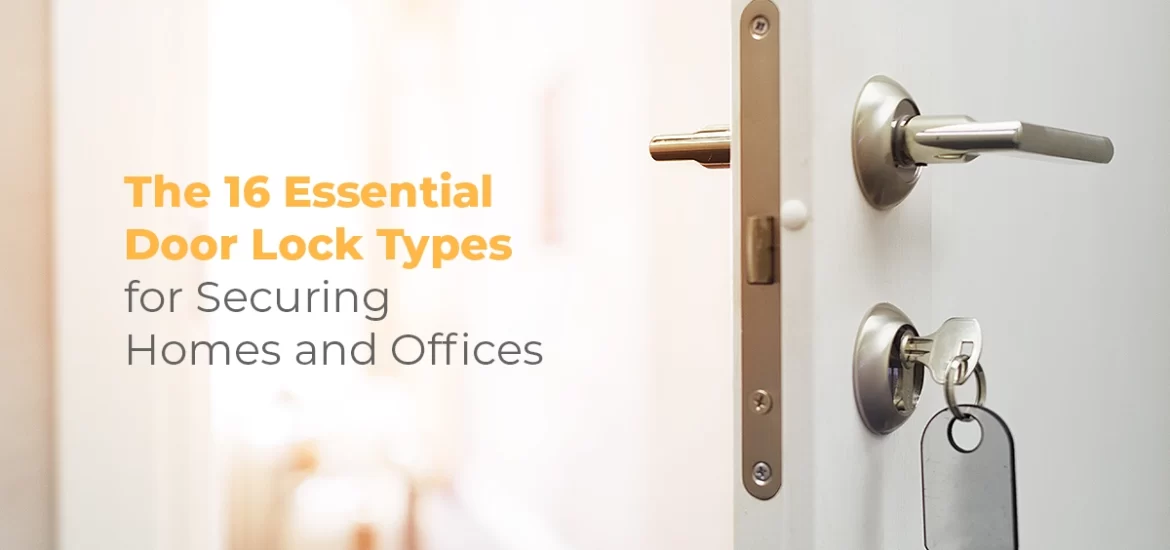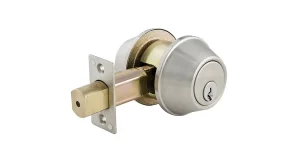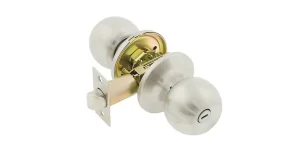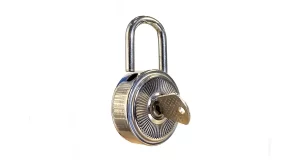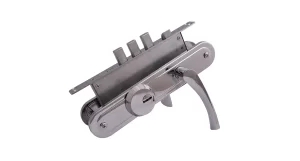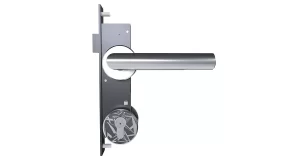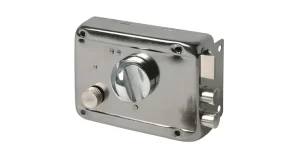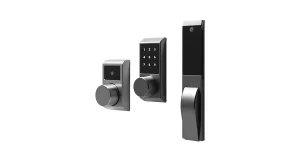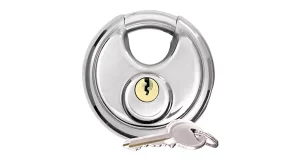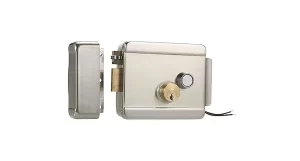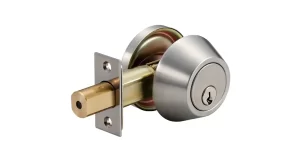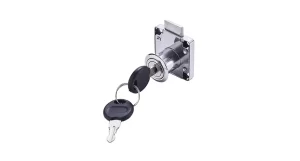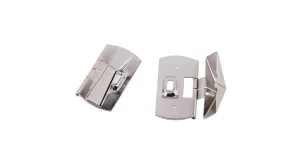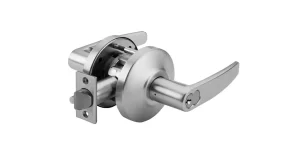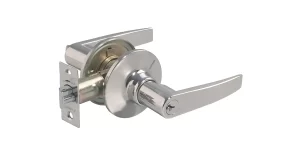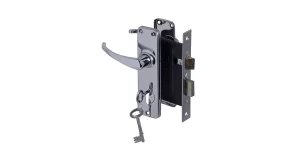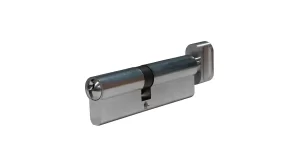Understanding how a door lock works is more than just knowing its parts—it’s about making informed decisions that affect the safety, security, and convenience of a building. Whether you’re an architect, a contractor, or someone in charge of security, knowing the components of a door lock is crucial.
The type of door locks you choose can make a big difference in both security and ease of use. From traditional mechanical locks to advanced smart locks, each has its own set of door lock parts that work together to protect people and property. In this blog, we’ll break down the key parts of different types of door locks, what are the parts of a door lock called and explain how each one contributes to the overall function. By understanding these details, you’ll be better equipped to make smart choices when designing or upgrading a building. Let’s dive into how door lock components really work!
Components of a Traditional Door Lock
A traditional lock works through a series of interconnected parts, each playing a role in keeping a door or container secure.
Here’s a breakdown of the parts of a door lock:
1. The Cylinder (or Core): This is the main part where the key goes. Inside, there are pins and springs that move to allow the lock to open when the correct key is used.
2. Keyway: This is the slot where the key is inserted. It’s specially shaped to match the profile of the key.
3. Plug: The central part of the cylinder that rotates when the correct key is turned, enabling the lock to open.
4. Housing: The outer shell that holds all the internal components in place.
5. Pins and Springs: These lock parts control how the lock opens. There are different types:
Driver Pins: These pins are pushed by springs and sit above the key pins.
Key Pins: These pins are directly engaged by the key, and they vary in length according to the cuts on the key.
Springs: Springs push the pins into place, preventing the lock from opening unless the correct key is used.
6. The Shear Line: This is the gap between the plug and the housing. When the right key is inserted, it aligns the pins at this line, allowing the plug to rotate and the lock to open.
7. Lock Body (or Housing): The outer casing of the lock, usually made from materials like brass or steel, which provides durability and security.
8. The Cam or Tailpiece: This is located at the back of the cylinder. It connects the cylinder to the locking mechanism and helps move the latch or bolt when the plug turns.
9. Latch or Bolt: This is the mechanism that physically locks the door or item. There are two types:
Spring Latch: This automatically moves when you turn the handle.
Deadbolt: This requires manual turning for added security.
10. Strike Plate: A metal plate installed on the door frame that ensures the latch or bolt is securely held in place when the door is locked.
11. Key: The tool used to unlock the lock. The key is cut in a specific pattern that matches the pins inside the lock. When the correct key is inserted, the pins line up and the lock opens.
12. Other Features: Some locks include additional parts for extra security or convenience:
• Thumbturn: A small handle inside the lock that lets you turn the lock from the inside without a key.
• Anti-pick Features: Special design elements that make it harder for burglars to pick the lock.
• Reinforcements: Extra durable parts, like steel inserts, that prevent the lock from being easily drilled or broken.
Components of a Smart Door Lock
A smart lock is made up of several key components that work together to provide security and convenience.
Here’s a breakdown:
1. Lock Mechanism (Deadbolt or Latch)
This is the part that physically locks the door. There are two types:
Deadbolt: A stronger, more secure option that’s harder to tamper with.
Latch: A simpler lock, often used for interior doors or situations with lower security needs.
2. Motor or Actuator
This is what moves the lock mechanism (deadbolt or latch) when you lock or unlock the door. It receives signals from your phone, keypad, or other devices and physically shifts the lock.
3. Control System (Microcontroller or Processor)
Often referred to as the “brain” of the lock, this system receives your commands (like locking or unlocking the door) and instructs the motor to carry them out. It helps the lock interface with apps, keypads, and sometimes even biometric systems like fingerprint scanners.
4. Power Source (Batteries or Hardwiring)
Smart locks need power to function. Most use batteries, but some can be wired directly into your home’s electrical system.
Battery-powered locks are easier to install but require regular battery replacements.
Wired locks don’t need battery changes but are more difficult to install.
5. Connectivity Modules (Bluetooth, Wi-Fi, Z-Wave, Zigbee)
These modules allow the lock to communicate with other devices:
Bluetooth: Lets your phone unlock the door when you’re nearby.
Wi-Fi: Allows you to lock or unlock the door remotely from anywhere.
Z-Wave/Zigbee: Work with other smart home devices, creating an interconnected system.
6. User Interface (Keypad, App, or Biometric Scanner)
This is how you interact with the smart lock:
Mobile app: Allows you to control the lock remotely
Keypad: Lets you enter a PIN code to unlock the door.
Biometric scanner: For higher security, like using a fingerprint scanner.
7. Sensors and Security Features (Tamper Detection, Force Sensors)
These features help keep the lock secure:
Tamper Detection: Alerts you if someone is attempting to tamper with the lock.
Force Sensors: Detect when someone is trying to break into the lock and can trigger an alarm or send you a notification.
8. Strike Plate and Door Hardware
These parts ensure the lock stays secure by properly engaging the bolt or latch when the door is locked. This makes it harder for someone to force the door open.
Components of an Electronic Door Lock
1. Lock Body (Electromechanical Mechanism)
The lock body is the main part of the lock that physically secures the door. Inside, you’ll find:
• Deadbolt or Latch: This part slides into the door frame, keeping the door securely locked.
• Motorized Mechanism: In electronic locks, a small motor moves the bolt or latch when the lock receives a signal, like from a keypad or card reader.
2. Electronic Controller (Circuit Board)
Think of this as the “brain” of the lock. It:
• Receives signals from keypads, card readers, or mobile apps.
• Decides if the signal is valid and grants access.
• Keeps the lock secure by encrypting the data to prevent hacking.
3. Power Source
The lock needs power to work, which it can get from:
• Batteries: Common for easy installation, especially in residential locks.
• Wired Power: For locks that need a constant power supply, often used in commercial settings.
• Backup Power: Some locks include small backup batteries to keep working if the main power fails.
4. Access Control Devices
These are how you interact with the lock. Some options include:
• Keypad: You enter a PIN code to unlock the door.
• Card Reader (RFID): Scans a card or key fob to grant access.
• Biometric Scanners: Uses your fingerprint or face to unlock the door.
• Mobile Apps: Allows you to unlock the door remotely via Bluetooth or Wi-Fi from your phone.
5. Locking Mechanism (Bolt or Latch)
This is the part that physically locks or unlocks the door by moving a bolt or latch.
• Deadbolts: Strong, heavy bolts that resist forced entry.
• Latch Bolts: These are spring-loaded bolts that extend automatically when the door closes.
• Motorized Latches: In electronic locks, small motors control when the latch extends or retracts.
6. User Interface
This is how you interact with the lock itself:
• Touchscreen: Some locks let you enter codes or adjust settings through a touchscreen.
• Indicator Lights: LED lights show if the door is locked, unlocked, or if there’s an issue.
• Audio Feedback: Sounds, like beeps, help signal the status of the lock.
7. Lock Case (Housing)
The lock case is the sturdy outer shell that protects the internal parts, like the motor and circuit board, from damage or tampering.
8. Connectivity Module
In more advanced locks, this component lets the lock communicate with other devices or systems, such as:
• Wi-Fi/Ethernet: For remote monitoring and control from anywhere.
• Bluetooth: Unlocks the door when your phone is nearby.
• Z-Wave/Zigbee: Used in smart home systems to connect different devices together.
9. Auxiliary Components
These additional features enhance the lock’s security or functionality, such as:
• Interlocking Mechanism: Prevents the door from opening unless certain conditions are met.
• Tamper Sensors: Detect any unauthorized attempts to break into the lock.
• Access Logs: Records who used the lock and when, adding an extra layer of security.
Components of a Combination Door Lock
1. Dial or Keypad: This is how you input the combination. In mechanical locks, it’s a round dial with numbers that you turn in a certain order. In digital locks, it’s a keypad where you press numbers.
2. Locking Mechanism: Inside the lock, there’s a metal bolt that keeps the lock in place. When you enter the right combination, the internal parts move, and the bolt retracts, unlocking it.
3. Cam or Gear: This part connects the dial or keypad to the internal parts of the lock. When you turn the dial or press keys, the cam or gear moves to align the parts and release the bolt.
4. Pins or Tumblers: These are small pieces inside the lock that prevent the bolt from moving unless the correct combination lines up the pins in the right way.
5. Spring Mechanism: After you use the lock, the spring makes sure everything returns to its original position so the lock can work again.
6. Shackle or Hasp: This is the U-shaped bar that attaches the lock to something, like a door or gate, and keeps it from being tampered with.
7. Protective Cover: The whole lock is covered in a protective case (usually metal or plastic) to prevent dirt, water, or damage from getting inside.
8. Changing the Combination: Some locks let you change the combination by using a special screw or mechanism, giving you the option to update your security.
In more advanced electronic locks, instead of mechanical parts, there are circuits, sensors, and motors that electronically interpret your input and unlock the lock. Some also have lights or indicators to show if the lock is set correctly.
Components of a Mortise Door Lock
1. Lock Body (Case)
The lock body is the main part of the lock. It’s usually made of metal like steel or brass and gets installed into the edge of the door. This part holds everything together and keeps the lock functioning properly.
2. Latch Bolt
The latch bolt is a spring-loaded piece that sticks out when the door is closed, latching onto the strike plate in the door frame. It keeps the door shut securely. Some latch bolts are designed to be tougher to force open, adding extra security.
3. Deadbolt
The deadbolt is a second bolt that offers even more security. Unlike the latch bolt, it’s not spring-loaded and can only be moved with a key or a thumbturn. Deadbolts are much harder to break open, making them a great option for added safety.
4. Thumbturn
The thumbturn is a small lever on the inside of the door. It lets you lock and unlock the deadbolt without needing a key. It’s a convenient way to secure the door from the inside.
5. Key Cylinder
This is the part where you insert a key to unlock the door. Located on the outside, the key cylinder holds the mechanism that controls the bolts. It’s designed to be secure and resistant to tampering.
6. Strike Plate
The strike plate is installed on the door frame, and it’s where the latch bolt and deadbolt lock into place when the door is closed. It helps keep the door securely locked and prevents the bolts from sliding out of place.
7. Escutcheon Plate (or Rosette)
This is the decorative cover around the keyhole. It protects the keyhole from dirt and weather damage while also adding a nicer look to the lock. It can also make the key easier to insert and turn.
8. Spindle
The spindle is a metal rod that connects the door handles to the lock. When you turn the handle, the spindle moves, which activates the latch or deadbolt to unlock the door.
9. Operating Mechanism (or Locking Mechanism)
This is the internal system of gears, springs, and levers that control how the bolts move. It ensures that when you use the key, thumbturn, or handle, the bolts lock and unlock smoothly and securely.
Smart Lock Vs Electronic Lock
Smart locks and electronic locks are both modern alternatives to traditional mechanical locks, offering enhanced security and convenience. While they share similarities, there are key differences in how they function, their features, and how they connect with other devices.
Smart Locks:
How They Work: Smart locks are similar to electronic locks but come with extra features, including internet connectivity.
Components:
• Lock Mechanism: Just like electronic locks, they secure the door with an electronic mechanism.
• Wireless Connectivity: Smart locks can connect to your phone or other devices via Bluetooth or Wi-Fi, allowing for remote control.
• Mobile App Interface: With a smartphone app, you can lock or unlock the door and monitor its status.
• Authentication Methods: In addition to keypads, some smart locks use fingerprint sensors or allow unlocking via your smartphone.
• Power Source: Most smart locks run on batteries, with some offering backup power options.
Electronic Locks:
How They Work: Electronic locks operate using electricity to control access instead of relying on a traditional key.
Components:
• Lock Mechanism: This works similarly to traditional locks but uses electronic controls to secure the door.
• Keypad or Card Reader: Users unlock the door by entering a PIN code or swiping a card.
• Power Source: Typically powered by batteries or a direct connection to a power supply.
• Control Circuitry: The system processes input from the keypad or card reader to unlock the door.
Electronic locks usually don’t connect to the internet or other devices, and they’re most commonly used in businesses for keyless entry.
Traditional Lock Vs Smart Lock
When comparing traditional locks to smart locks, it helps to understand how each works and the main parts that make them function.
Traditional Locks:
Traditional locks, the kind most people are familiar with, are mechanical and require a physical key.
Here’s how they work:
• Cylinder: This holds the inner mechanism of the lock.
• Plug: Where you insert your key to turn the lock.
• Pins: Inside the lock, there are small pins that align when the correct key is inserted, allowing the lock to turn.
• Spring: The spring pushes the pins into position to work with the key.
• Bolt (or Latch): The part that actually keeps the door locked by connecting to the door frame.
All these parts work together to lock or unlock the door through mechanical means. There’s no power source needed, and they’ve been used reliably for centuries.
Smart Locks:
Smart locks take things a step further by adding electronic features, such as the ability to unlock doors without using a key. They rely on electronic components:
• Electronic Actuator: This moves the lock mechanism based on electronic signals.
• Connectivity Modules: These allow the lock to communicate with your phone or other devices through Bluetooth, Wi-Fi, or other wireless technologies, so you can control it remotely.
• Authentication Interface: This could be a keypad, fingerprint scanner, or another method to verify the user trying to unlock the door.
• Power Source: Smart locks typically run on batteries or are wired directly to an electrical system.
Smart locks offer more convenience, but they also come with a bit more tech involved compared to traditional locks.
Key Takeaway
In short, it’s important to understand how different types of door locks work when deciding which one is best for your security and convenience. Whether you choose a traditional lock, a smart lock, an electronic lock, or something like a combination or mortise lock, each type has components that work together to protect your space. By learning about how these parts—like pins, springs, sensors, and technology—function, you can make sure the lock you choose meets your needs. This knowledge will help you select a lock that boosts your home’s security or makes managing a larger property easier. The right lock can not only enhance safety but also improve usability.
